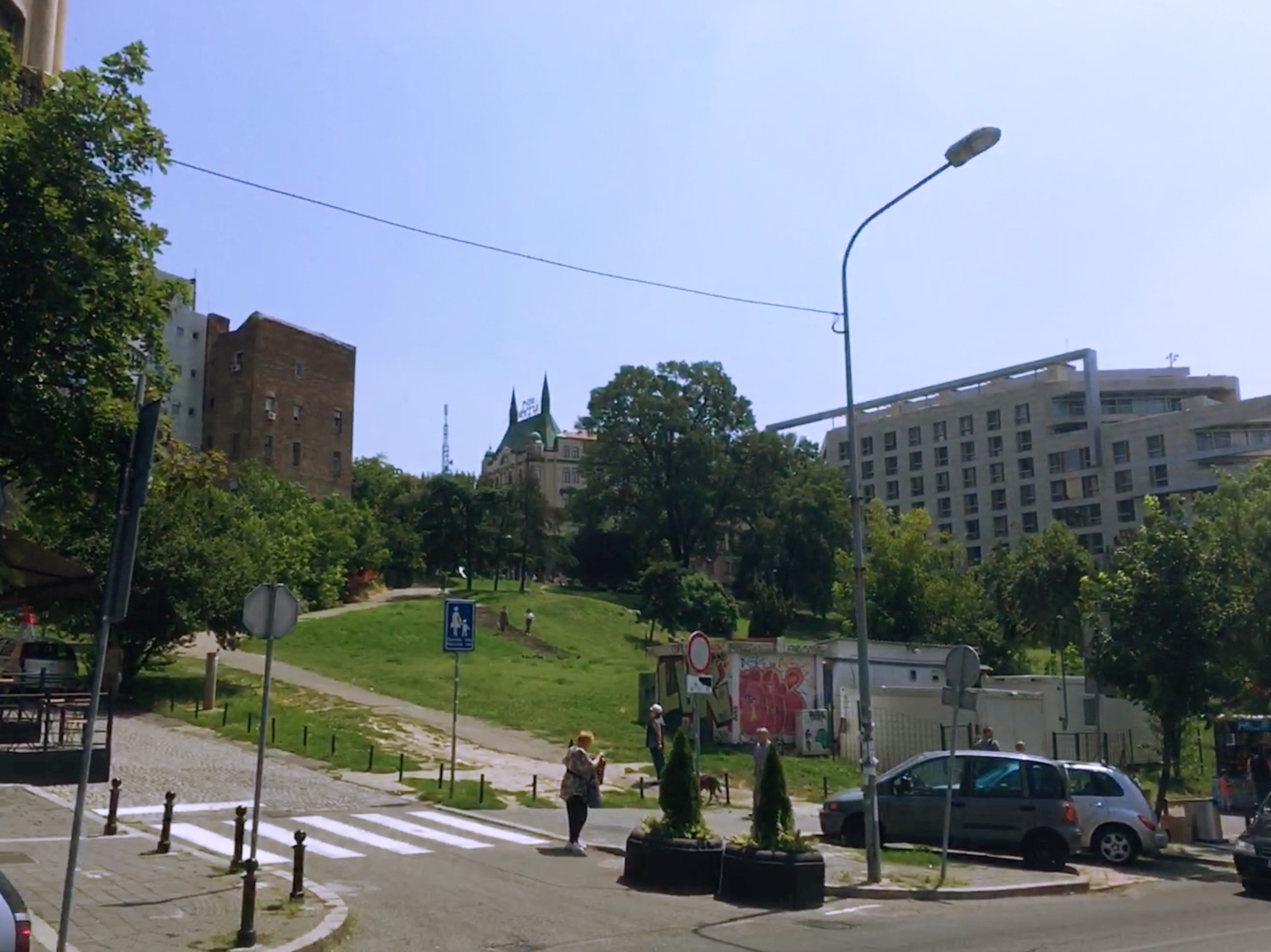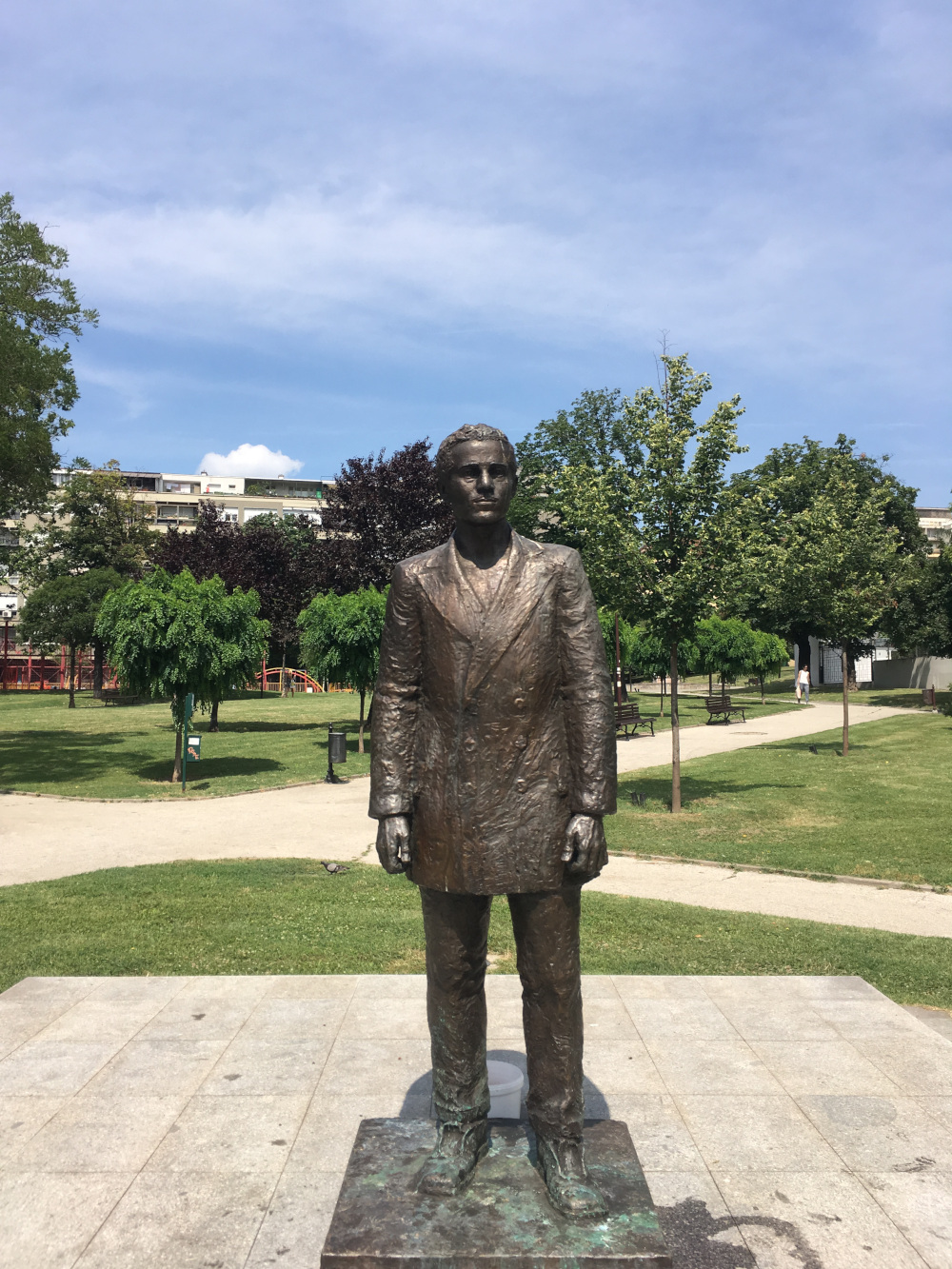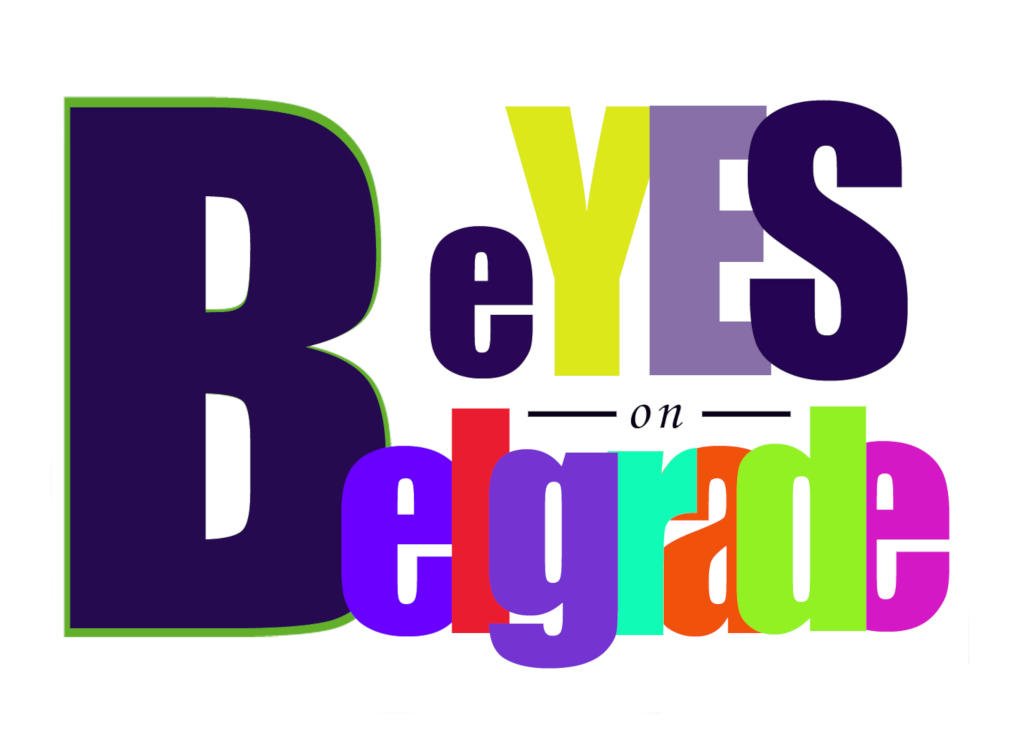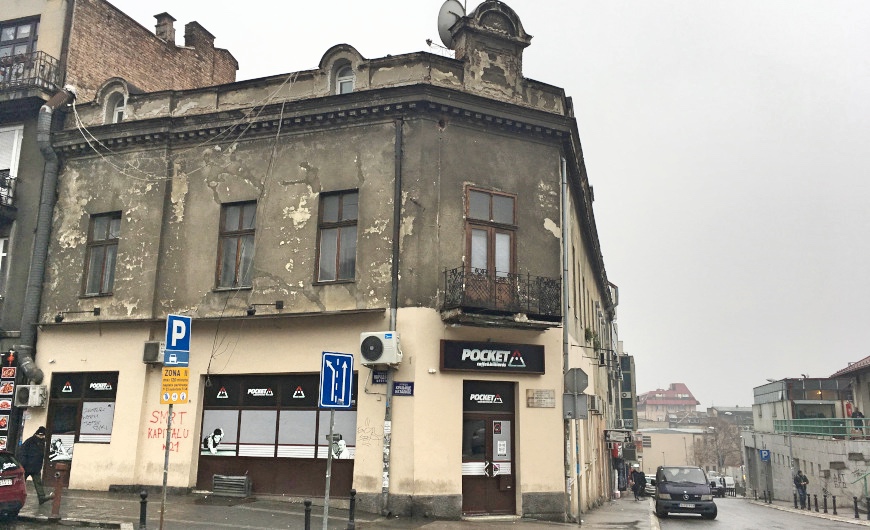You find yourself at Terazije square, near the fountain, asking yourself what to do or see next. Well, very few people will advise you to go and see a nonexistent tavern in an unattractive house that barely stands. If anything, at least it is pretty close.
So, you go down Terazije Terrace, a slope that leads you directly to the corner of Kamenička and Kraljice Natalije street, next to "Zeleni Venac" open market, where the house is located. Unfortunately, you won't be able to enter the tavern and take a drink, because the tavern is no more. You'll have to use your imagination, with a little help from us.

Terazije Terrace
Sometime in May, 1914. Gavrilo Princip enters the tavern "Zlatna Moruna" (eng. "Golden Beluga", called after the fish market nearby) with his fellow patriots Nedeljko Čabrinović and Trifko Grabež, from "Mlada Bosna" (eng. "Young Bosnia") Serbian revolutionary organization. They pass a couple of drunken workers, a table with merry students discussing the strategy of approaching young dames later on at the promenade, and a pair of merchants negotiating the price of cloth of some kind, and sit by the window, semi-covered with curtains. Trifko pulls together checkered drapery, looking back, nervously. Some guys are shooting pool in the back, and other are placing bets around the table. A lot of suspicious characters frequented the place, including the undercover police and foreign agents, all of them looking to unveil plots of clandestine patriot organizations who used this tavern as an unofficial recruit center. They notice a couple of familiar faces, but three youngsters act as if they aren't aware of them.
The waiter comes and puts his tray on the table. He picks up a couple of glasses, leftovers from the previous customers, and asks the guys what they would like to drink. After taking the order, he walks away, leaving behind an envelope on the table, addressed to the name of Nedeljko Čabrinović. Nedeljko quickly hides it on the lap, and slowly retrieves the piece of paper out of it. Suddenly, he gets very serious. "Archduke Franz Ferdinand will be in Sarajevo, on June 28th", he says. "On Vidovdan, Serbia's greatest national holiday", comments Gavrilo, smiling ironicly. "It will be his last day on Earth", he adds. And they all get quiet, looking anxiously at each other. "We cannot do it and get out of it alive", finally says Trifko. Gavrilo smiles, this time from the bottom of his heart. "Like our brave friend Bogdan Žerajić said to me, he who wants to live will die, and those who want to die will continue living", he says out proudly.

Monument to Gavrilo Princip in Gavrilo Princip Park, viewed from Nemanjina street
And the rest of it is history. Archduke Franz Ferdinand was assasinated by Gavrilo Princip in Sarajevo. Gavrilo was captured, and taken into custody at Terezin prison, where he was constantly tortured before he died in 1918. The assassination of Austrian heir to the throne led to the outbreak of the World War I. Austria accused Serbia of helping the organizers, but it was never proven. Nevertheless, Austro-Hungarian forces attacked Serbia exactly one month from Sarajevo incident, on July 28th, 1914, which marked the beginning of the Great War. After initial losses, and great Serbian victories on the mountain of Cer (first victory of the allied powers in World War I) and by the river Kolubara, the invaders gathered numerous forces and broke the resistance, which resulted in Serbian army retreating from Serbia, across Albania to Thessaloniki region, where they established the south-eastern front with the help of French and English allies.
The so called "anexion crisis" broke out in 1908 when Austria-Hungary seized the control over Bosnia, the region in the western Balkans, regarded by the Serbs as their historical heritage. This was a true slap in the face for Serbia and its people, and from that moment on, the relations between the two countries have gone from bad to worse. Patriotic revolutionary organizations, like "Young Bosnia" and "Unification or Death", among others, grew rapidly at the time, with the single purpose of recovering Serbian western territories from the occupiers. The act of Gavrilo Princip was the final touch, and something that Austria couldn't tolerate.
However, many historians agree that the war was inevitable, and that Austria was only looking for excuse to attack Serbia. On the other hand, Serbia was exhausted after two Balkan Wars in 1912-13, and didn't want confrontation. Serbian government did everything to try to pursuade Austria that they didn't know anything about the plans for assassination. However, they refused to let Austrian police and agents roam the country freely and make arrests. Nobody would have accepted that kind of request. And Austria requested precisely that. The war couldn't be avoided...

In the end, Gavrilo Princip's words (look at street art photo above) are summing it up: "Our shadows will walk the streets of Vienna, roam the royal palace, and scare the gentlemen".
Gavrilo Princip is revered as one of the greatest national heroes. In Belgrade, he got the street, the park and the monument. His words are remembered, and his action is something that makes Serbian national being proud. Imagine, he was only 20 years old when he assasinated the Austrian archduke, the act that led to consequent dissolvement of one of the greatest empires Europe have seen.
 English (United Kingdom)
English (United Kingdom)  Srpski latinica (Srbija)
Srpski latinica (Srbija) 




















